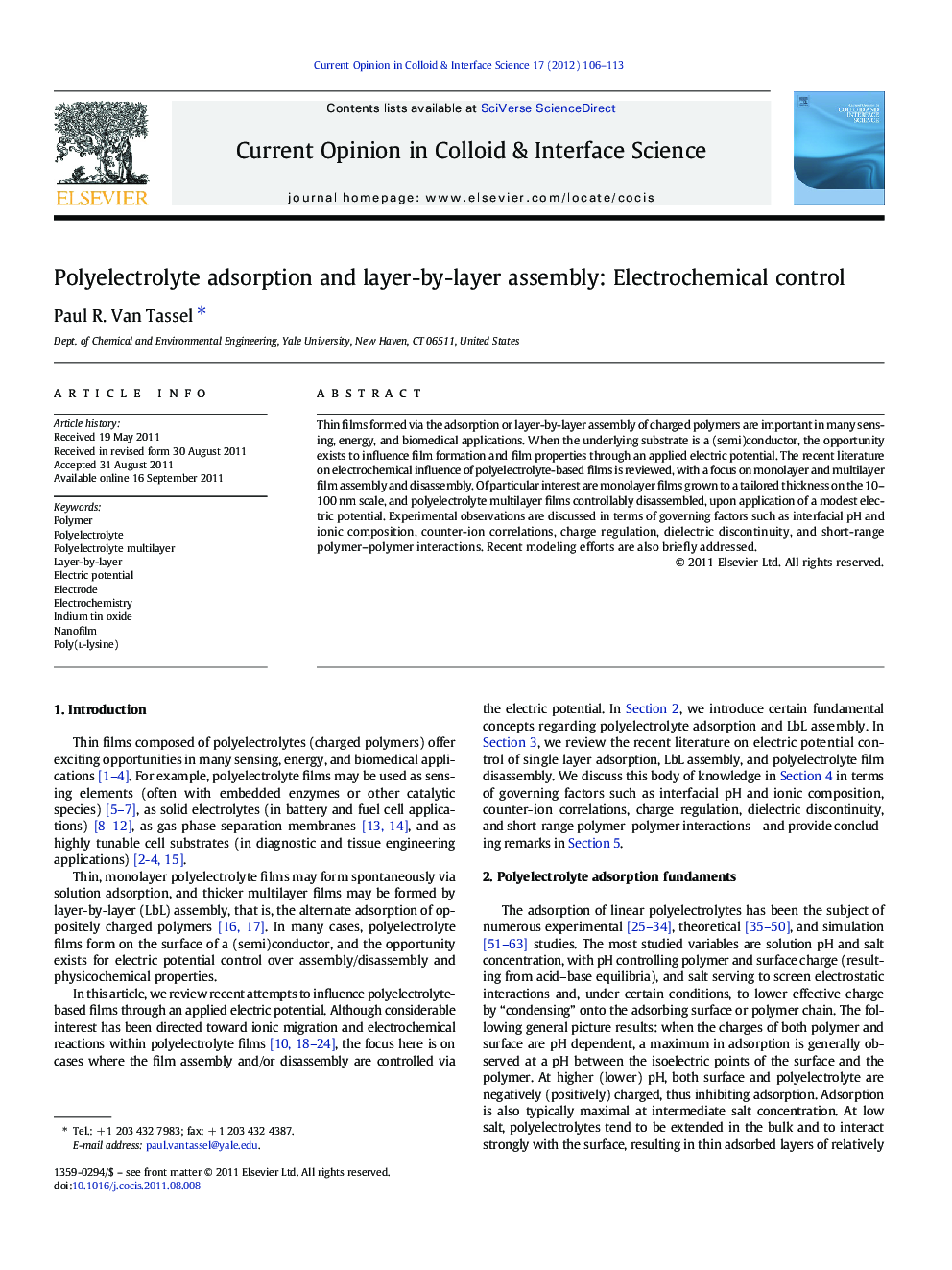| Article ID | Journal | Published Year | Pages | File Type |
|---|---|---|---|---|
| 603444 | Current Opinion in Colloid & Interface Science | 2012 | 8 Pages |
Thin films formed via the adsorption or layer-by-layer assembly of charged polymers are important in many sensing, energy, and biomedical applications. When the underlying substrate is a (semi)conductor, the opportunity exists to influence film formation and film properties through an applied electric potential. The recent literature on electrochemical influence of polyelectrolyte-based films is reviewed, with a focus on monolayer and multilayer film assembly and disassembly. Of particular interest are monolayer films grown to a tailored thickness on the 10–100 nm scale, and polyelectrolyte multilayer films controllably disassembled, upon application of a modest electric potential. Experimental observations are discussed in terms of governing factors such as interfacial pH and ionic composition, counter-ion correlations, charge regulation, dielectric discontinuity, and short-range polymer–polymer interactions. Recent modeling efforts are also briefly addressed.
Graphical abstractThin films formed via the adsorption or layer-by-layer assembly of charged polymers are important in many sensing, energy, and biomedical applications. Substrate electric potential affords a powerful means toward the control of film assembly and disassembly. Of particular note is the continuous adsorption – that is, adsorption without apparent saturation over a time scale of hours – of linear polyelectrolytes that may occur upon application of a threshold electric potential.Figure optionsDownload full-size imageDownload high-quality image (159 K)Download as PowerPoint slideHighlights► Single component polyelectrolyte films of arbitrary nanoscale thickness. ► Controlled disassembly of nanoscale polyelectrolyte films. ► Counter-ion correlations and dielectric discontinuity key to governing mechanism.
